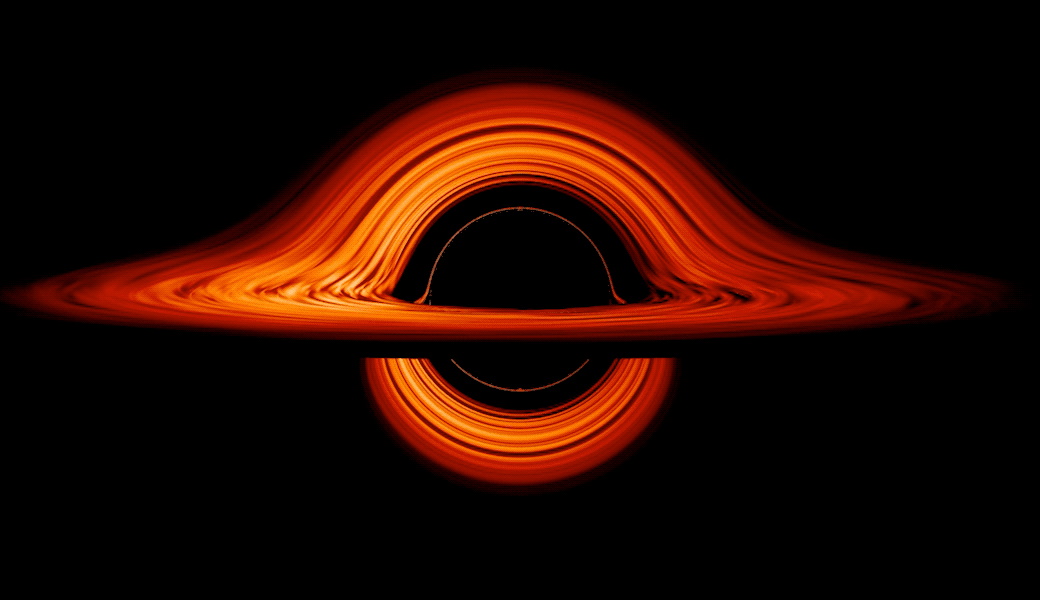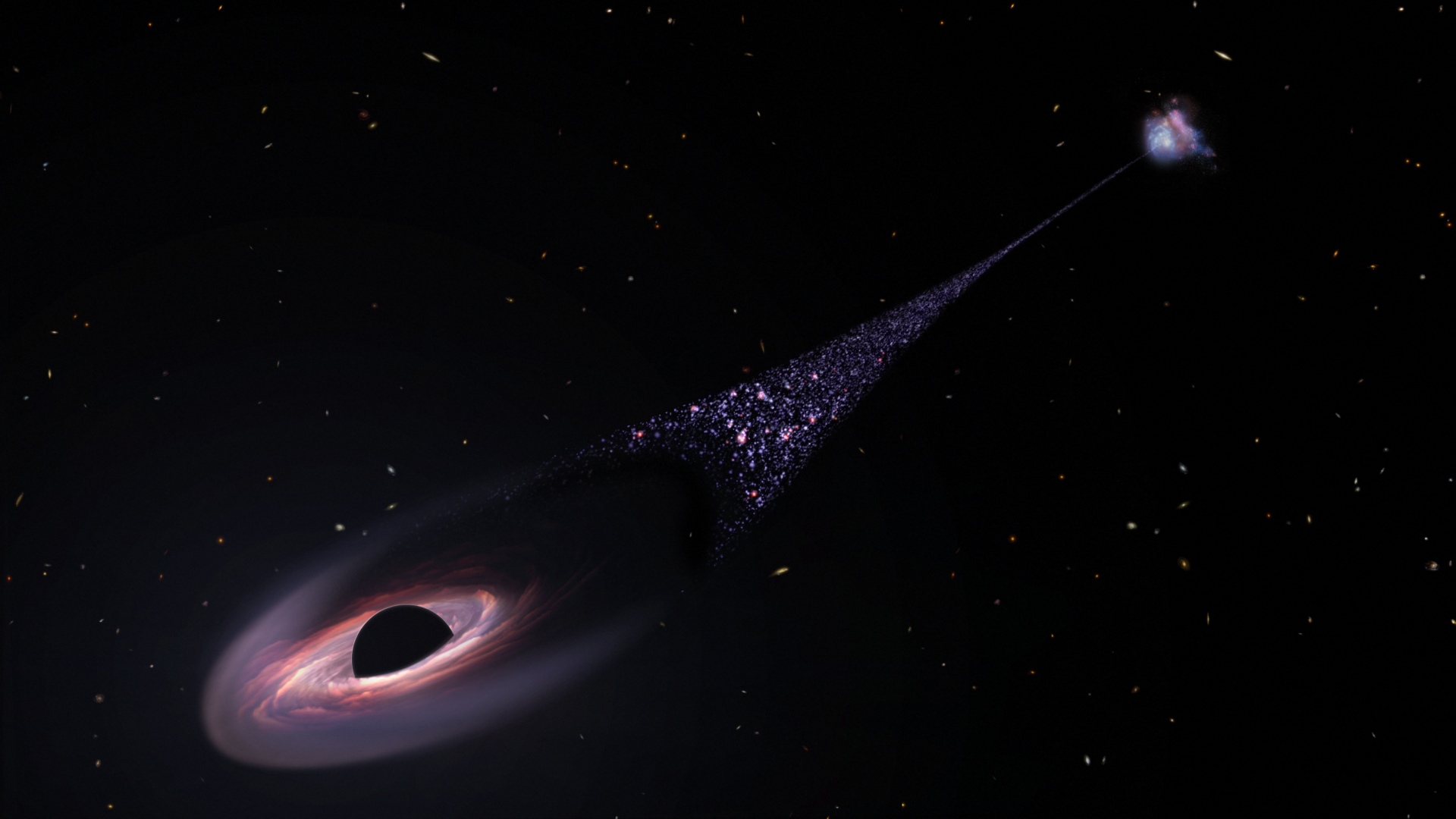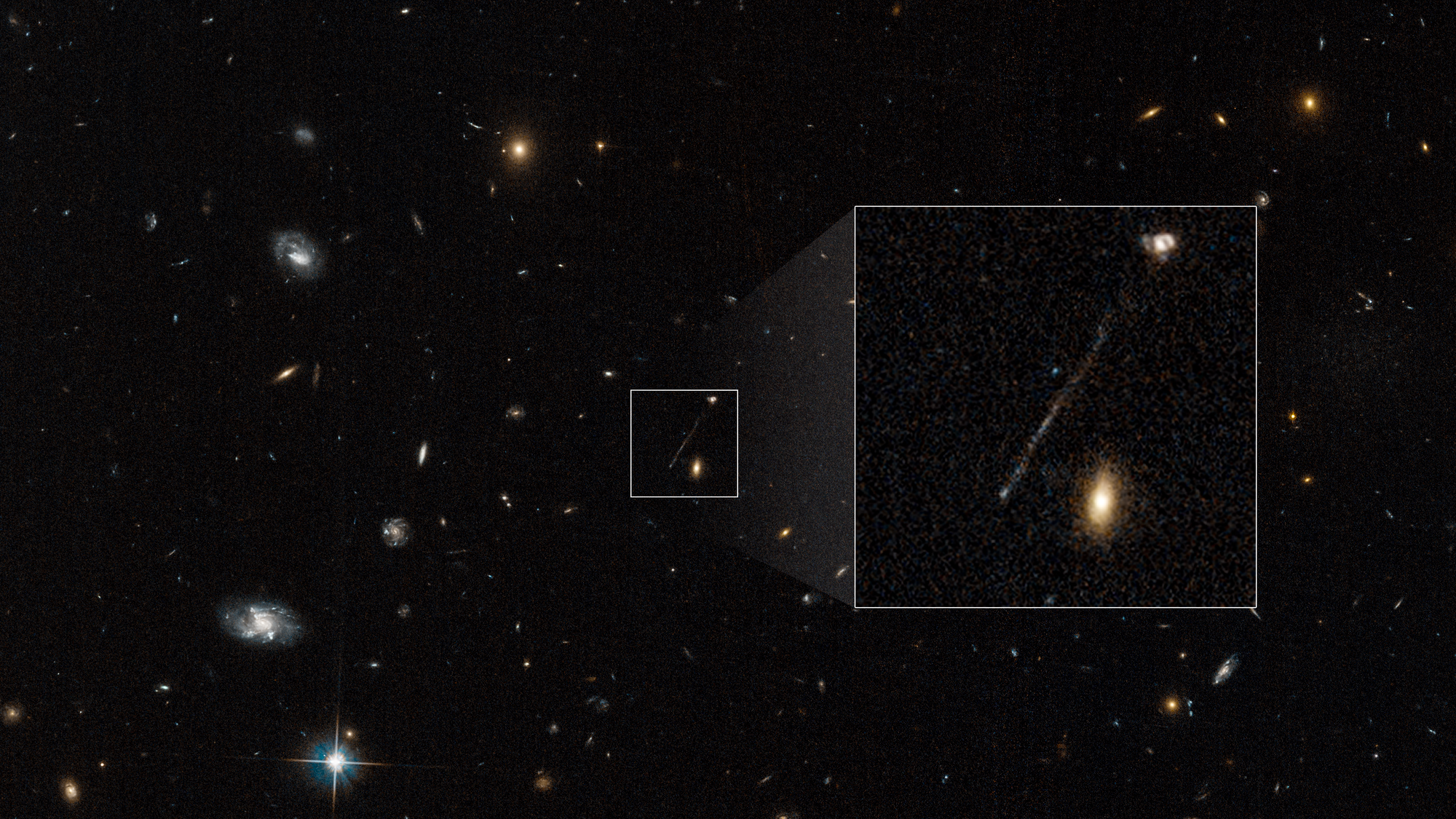A supermassive black hole with a mass of 20 million suns is running away from two other holes at more than 1.5 million km/h and dragging a tail of young stars 200 000 light years long

Scientists have been able to record a supermassive black hole escaping from two supermassive black holes. The escape was detected by the Hubble Space Telescope.
Here's What We Know
Astronomers studied the Hubble telescope's observations and saw the disturbance in the form of a light blotch. At first, they assumed that the problem was a cosmic particle hitting the space observatory's sensor. However, things turned out to be much more interesting.

A supermassive black hole has decided to run away from a system that consists of two supermassive black holes. The fugitive is dragging a trail of young stars up to 200,000 light years long. By comparison, the Milky Way Galaxy, where you and I are located, is 105 700 light-years in diameter.
Stars form because a supermassive black hole has no time to absorb the matter behind it. This is due to the enormous speed, which is over 1.5 million km/h. For all intents and purposes, at such a speed, a black hole can travel the distance from the Earth to the Moon (384,400 km) in 14 minutes.

Scientists have an explanation for the observed cosmic event. Fifty million years ago, two galaxies merged together to form a system of two black holes. Then another galaxy joined them. At its centre was a third black hole.
As a result, there was a gravitational imbalance. It caused one of the three holes to gain momentum and be ejected. The duo of black holes appears to be planning to leave their galaxy as well.
Source: NASA